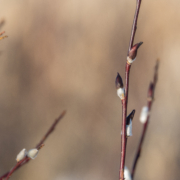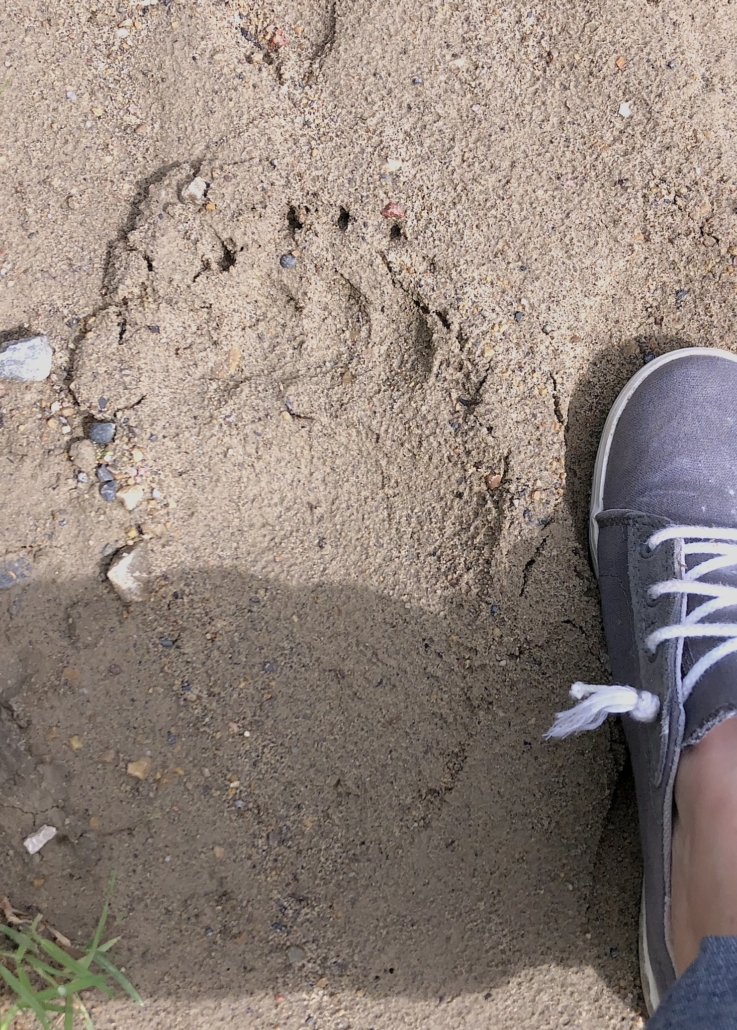Are the Bears Out Yet?
Spring has finally arrived!
The warmer temperatures and melting snow, the sound of geese arriving and the sweet spring song of chickadees makes one feel like spending more time outdoors, exploring our local trails!
That warmer weather also triggers the awakening of our hibernating mammals – the ground squirrels, chipmunks, woodchucks, as well as those that are in a state of torpor, such as bears and skunks. (A black bear was spotted on March 18 in Banff National Park, so we can assume that the bears in our area will be venturing out of their dens very soon). If you want to enjoy exploring local trails or you want to venture further into Alberta’s wilderness, learn about bear behaviour and how to keep safe while keeping bears safe.
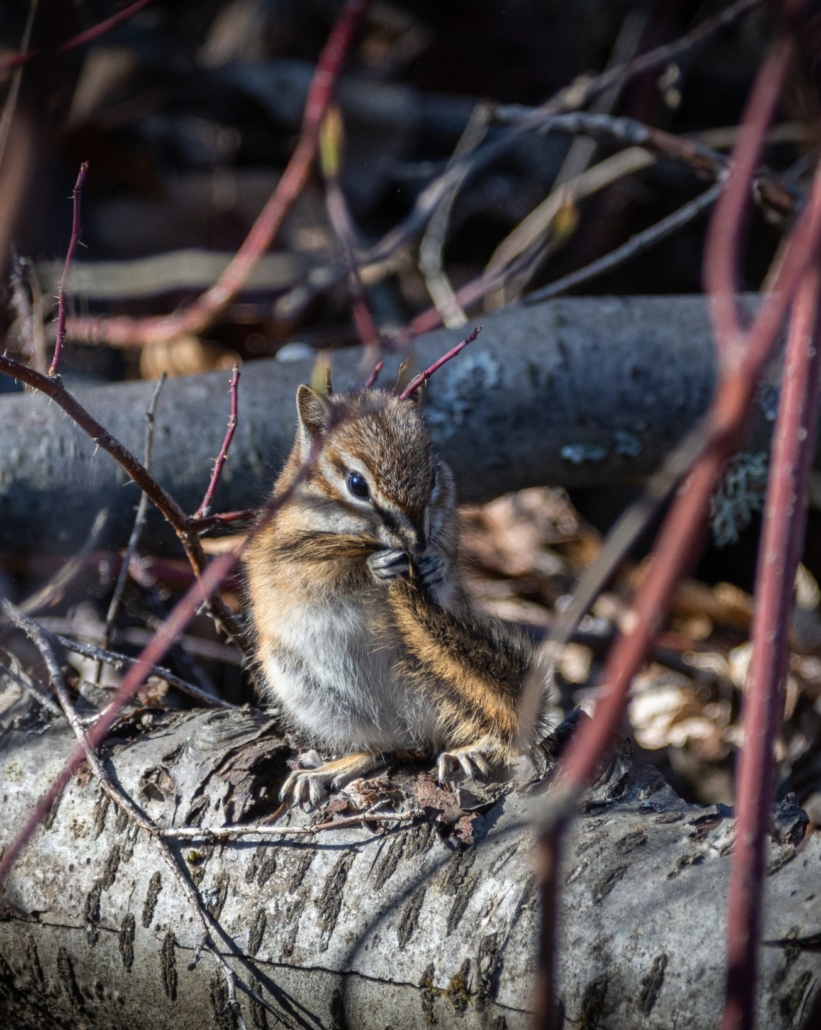
This chipmunk is one of Alberta’s hibernators. Soon, hikers in the parks will be able to spot them scurrying along in the leaf litter.
Walking Hibernation?
When bears leave their den, it takes 2 to 3 weeks for their metabolic processes adjust to normal summer levels. This is called “walking hibernation.” During walking hibernation, bears eat and drink less than they will later during normal activity. However, once their metabolic processes are back to normal, a bear with an unlimited food supply can eat between 5000 and 8000 calories a day! Bears exiting their dens will eat whatever they can find in early spring – grass, roots, carcasses of animals that died during the winter, hazelnuts and garbage.
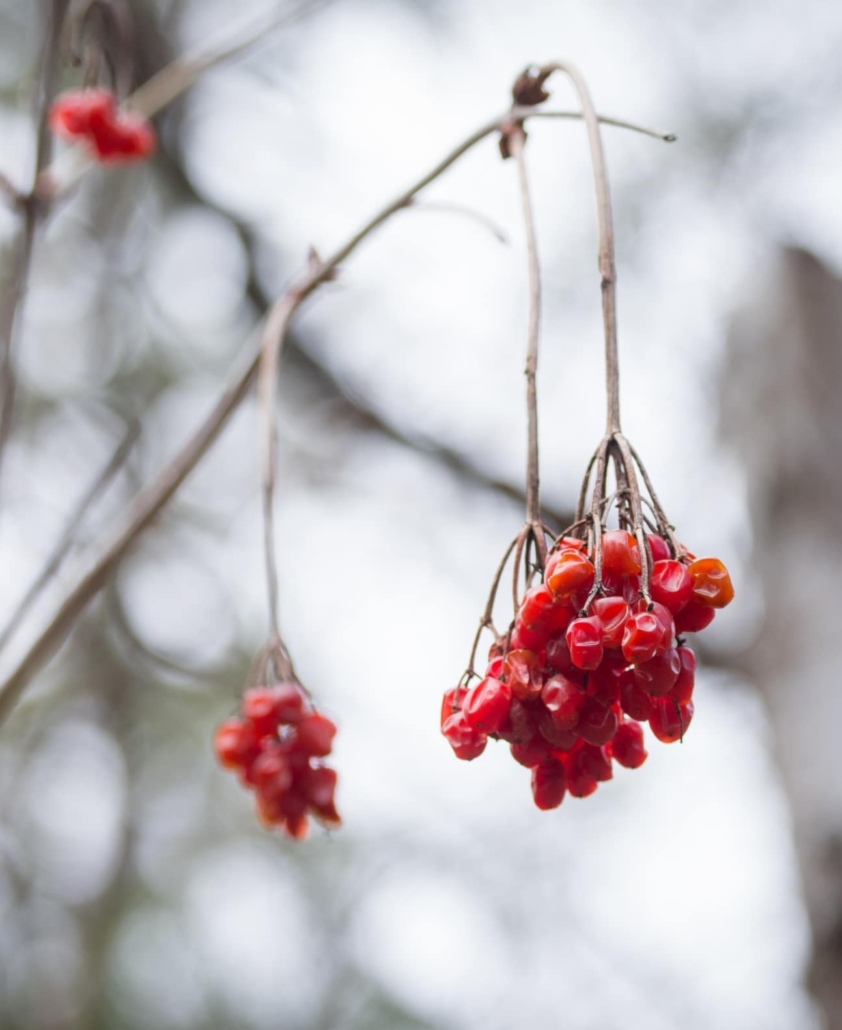
High bush cranberries, still on the plant after a long winter, can provide early nourishment for bears.
Bears in the Ecosystem
Bears are an important part of the boreal and parkland ecosystems. They serve an important role in seed dispersal, they “clean” the forest by removing carcasses of dead animals, and because they evoke fear in prey animals, such as deer, they cause herbivores to keep on the move and thus prevent overgrazing. Of course, they are beautiful and culturally important to our First Peoples too.
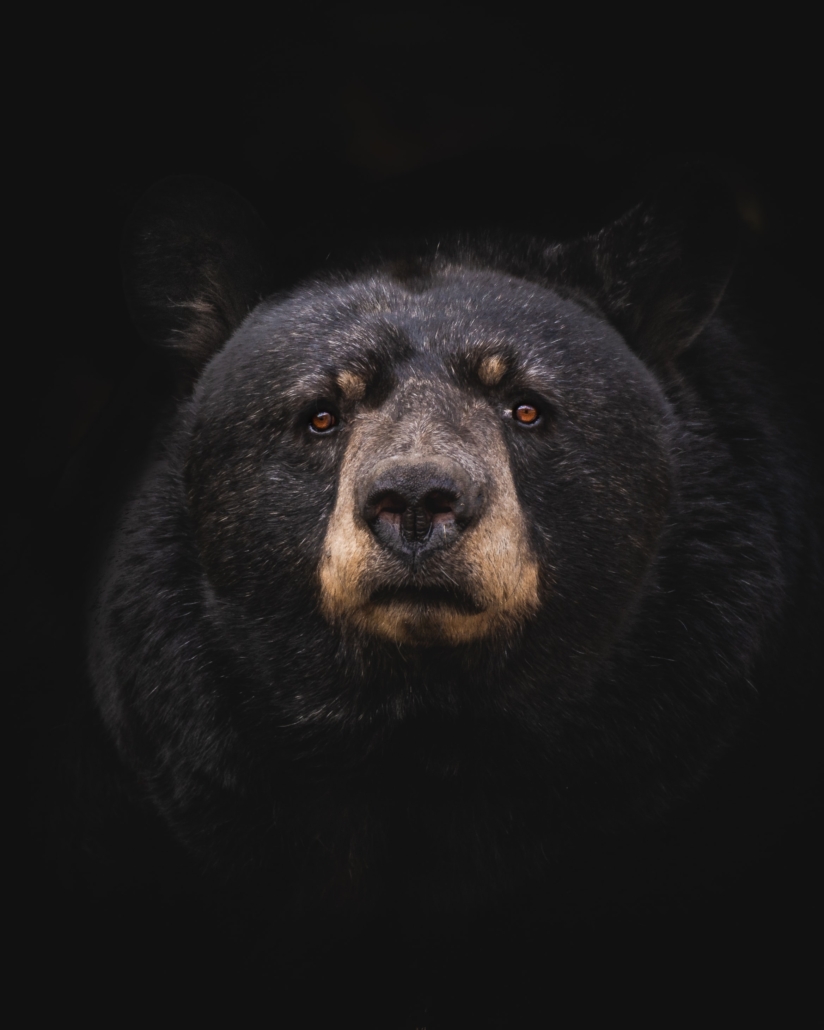
This is TOO Close! This large black bear is beautiful and powerful. Photo by Marc Olivier-Jodoin on unsplash.com
Protect the Bears and You
In order to protect yourself and the bears who live in Alberta’s wild places, make an effort to be bear smart. Don’t tempt bears with unattended food and make sure you put your garbage in a bear proof receptacle. Make noise if you are walking or biking, recreate in groups of 3 or more and keep young children between you and another adult. It is advisable to learn how to use bear spray or at least carry a small air horn on the outside of your pack. Watch for signs of bears in the area – fresh bear scat or digs can mean that a bear is nearby and you should retreat the way you came. You can visit https://www.alberta.ca/alberta-bearsmart.aspx to get more tips on how to be bear smart.

